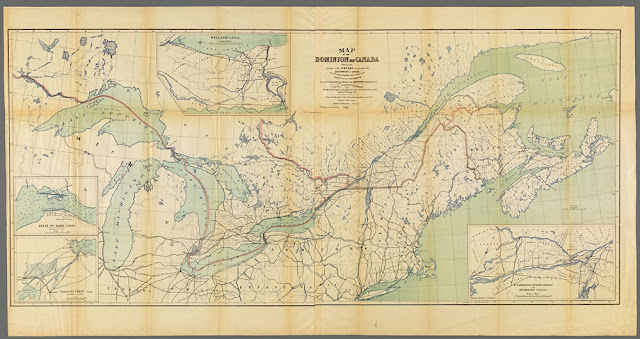 |
| HMCS Haida |
This Week's 52 Ancestors prompt is military. I've decided to focus on a branch of the Canadian military that often gets overlooked, the Royal Canadian Navy (RCN). The institution as we now know it was only founded in 1910. Before then, the country was under protection of the British Royal Navy.
If you're looking for more information on a Naval ancestor, then the first place you should look is the Government of Canada's page on Royal Canadian Navy history This site gives a great tutorial on just about anything you would like to know about the RCN:
- History of the Naval Service of Canada from 1867 to 2010
- Naval Leaders and Notable People
- Canadian Submarine History
- Naval Flags and Uniforms
- Niobe Day - October 21 - annual celebration of the anniversary of the first Canadian warship to enter Canada's waters
- Navy Centennial Image Gallery
- Ship's Histories
- Navy Historical Research
- Naval Museums
- Films
To research a specific ancestor, there isn't a lot online, and what is online is by no means complete. However, there are a few sites you can check out:
1. Library and Archives Canada has the collection Service Files of the Royal Canadian Navy, 1910-1941 - Ledger Sheets. The records themselves are not online. It is instead a searchable index of names. The main page of the collection gives details on how to obtain the records. They are also available to view onsite.
2. If your Naval ancestor died in World War II, check out the Service Files of the Second World War - War Dead, 1939-1947 database at the LAC. This database lists war dead from all branches of the Canadian Military. not all of the files are digitized on the LAC website, however all can be vied for free on Ancestry. Instructions on how to view them are on the collection's main page.
3. If your ancestor was an officer in the RCN or the Naval Reserves, take a look at the website Word War II unit histories. This is a private website that lists the birth and death dates, and naval history of officers. Some even have photographs.
4. The Nauticapedia is a website that holds biographies of Maritime and Naval personnel, as well as ship's histories. Though it primarily focuses on Western Canada, I did notice some people from Eastern Canada as well.
5. Veteran's Affairs Canada has the Merchant Navy War Dead Registry. It does not show digitized images. However, you will get a date of death, and the ship they were serving on. This information can help further your research. You can search by name or by ship.
6. There are several Naval Museums around Canada:
Some final tips:
- If your ancestor served in Naval uniform before 1910, then look to British Naval Records. If they were colonial French, then look to naval records from France.
- If your Naval ancestor survived World War II, or served in the years after up to 1998, then you will have to apply to Library and Archives Canada for their service record. Because of Canada's strict privacy laws, these records are not open access. You can find information about applying for access here.















